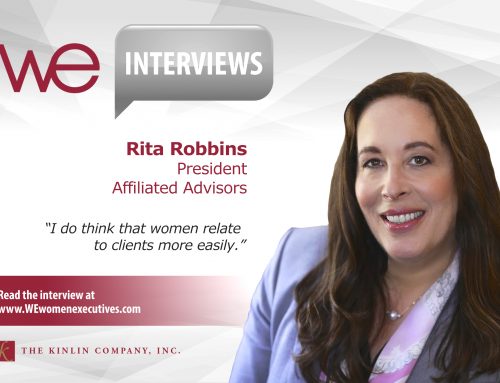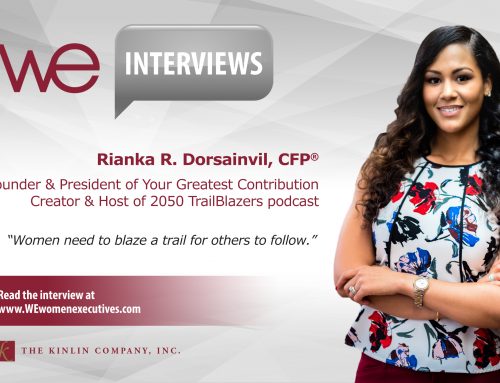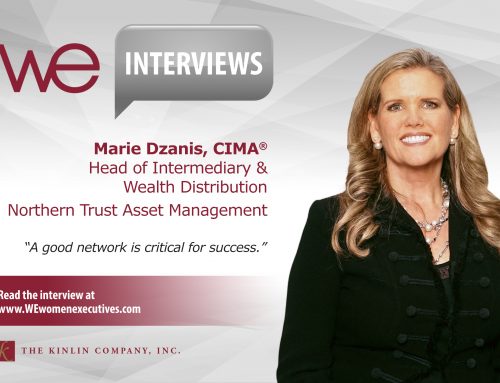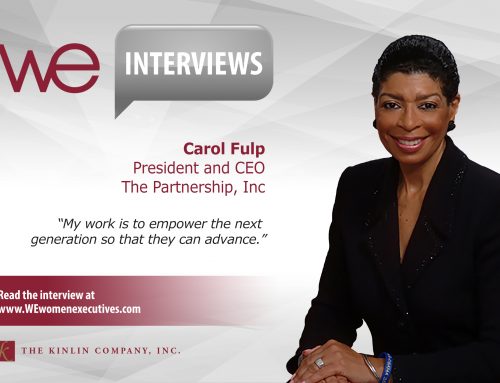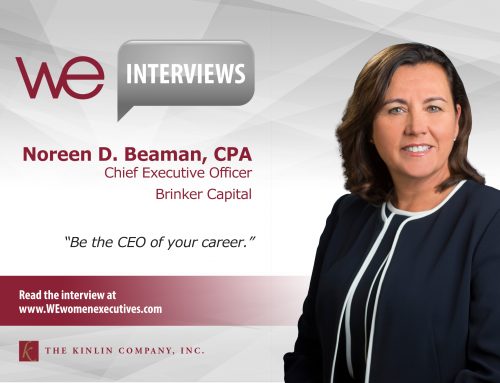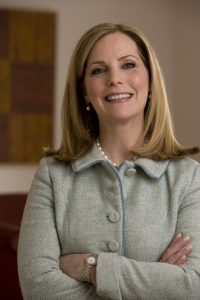 Merrillyn J. Kosier
Merrillyn J. Kosier
Executive VP & Chief Marketing Officer
Mutual Funds at Ariel Investments
Merrillyn Kosier’s numerous titles, roles and responsibilities paint the portrait of an executive who has managed to squeeze 36 hours from a 24-hour day.
As Executive Vice President at Ariel Investments and Chief Marketing Officer for the Mutual Fund business, Kosier oversees the marketing of six funds with roughly $9 billion in assets under management. She is responsible for Ariel’s branding, advertising, collateral, press relations and website, as well as the firm’s business relationships with third-party intermediaries. Additionally, Kosier is a trustee of Ariel’s mutual fund board.
I recently sat down with her to learn more about what motivates her and how, given her fervent belief that “multi-tasking hurts performance,” she successfully manages such a demanding career while still finding time to give back to her community.
In Part II of our conversation, Kosier discussed her sources of inspiration, her drive to give back, and the lessons she has learned over the course of her career.
It’s not about you; it’s about your team
One doesn’t have to converse with Kosier long to realize that she has been deeply influenced by the example her parents set. Was there anyone else who has inspired her over the years?
“If you look around, you’ll find great people who inspire you. But you have to be open to this, be aware of potential opportunities to learn and conscious of their impact. When I worked for Ralph Wanger, he would walk around the office with a cup of coffee. He’d come in, sit down in my office and ask, ‘Tell me what’s worrying you. Tell me what’s keeping you up. Tell me what you’re struggling with at work.’ He wanted to build an informal rapport. He knew this was important because he had a big reputation in the industry. Many people were intimidated by him. He wanted to break down that barrier, so we would tell him what was really going on. He would say to every new employee, ‘If I’m the first person you tell when there’s a problem, I’ll give you $200.” He wanted young people to know that he was a good problem-solver and not to hide their work problems. He wanted to eliminate fear around mistakes. I thought that was brilliant!
“It would probably shock him to know the impact that had on me, but creating an environment in which people always tell you the truth and don’t hide their mistakes—that’s huge.
“Ariel’s Chairman, CEO, Chief Investment Officer John W. Rogers, Jr., is an inspiration as well. John learned the meaning of teamwork when he went to Princeton and played basketball under Hall of Famer, Coach Pete Carril. Coach Carril hammered home the importance of working together and looking after one’s teammate. For young John, it was a game-changer. When he founded Ariel in 1983 (at the tender age of 24), teamwork became a cornerstone of his mission statement.
“Have you ever heard the old adage, ‘If you want something done, give it to a busy person’? Ariel’s President Mellody Hobson embodies that sentiment.
“Mellody wakes up very early, jumps on the treadmill, prepares for CBS This Morning, then arrives at Ariel and plows through a ton of work. If you look at her agenda, you’ll find that after five o’clock, she has a reception followed by a fundraiser, a board meeting or a conference call. You see this and you feel like a slacker. Her workload has inspired me to take on more commitments. That said, to get it all done, one must prioritize one’s work— this is a theme I keep coming back to again and again.
“Bob Parkinson, CEO and President of Baxter International, is also an inspiration. He’s a good friend of mine and repeatedly says, ‘It’s all about execution, execution, execution.’ He used to say, ‘Merrillyn, you can leave your strategic plan on an airplane and it won’t matter, because most people do not know how to execute.’ He told me, ‘Don’t worry about telling the competition how you do something. Be generous; tell them everything because most individuals don’t know how to execute.’ That lesson is really critical.”
Give what you get
Execution is obviously one of Kosier’s strengths, as evidenced by the impressive trajectory of her career path. Yet with such a demanding workload, I wondered how, and why, Kosier makes philanthropic endeavors such a large part of her life.
“I gravitate to things that are interesting to me and where I think I can be helpful. It can’t be about getting up every morning, heading to the gym, going to work, coming home, and then starting all over again. That would not be a fulfilling existence to me. Giving back helps to put a bad day in perspective. And, I want to contribute to a cause or organization that helps society.
“When you’re serving on a board, you’re really running a small business. You sharpen your skills and pick up new tools, and you meet interesting people. For example, the people I’ve met while serving on the national board of the Lupus Foundation of America are just wonderful; they’ve enriched my life in a million different ways.”
Be strategic, connect and take care of yourself
In light of Kosier’s serendipitous career path, I asked her if there was anything she wished she had known when she was just starting out.
1. You have to love a speed boat
“If you’re a young woman, be strategic in starting out at a larger firm. You can go from floor to floor at a large company and experience a very different culture on each floor or department. It’s like a turbo-charged master class in a big firm—you have different personalities, different line managers, different products to support, different communication programs and initiatives, different dollars being allocated to different lines, etc. I think it’s a tremendous training ground for young people. And then the sweet part is taking everything you’ve learned and applying it to a smaller firm or boutique. One of the things that I loved at Acorn was having that 35,000-foot perspective I gained from Kemper Financial Services. Once you have this intense training, you are equipped to connect the dots and make a meaningful contribution to the bottom line.
“At a smaller firm, you see it all, so when you’re working on projects, you’re not working in a vacuum. All your work relates to other parts of the business. You get to touch everything. Every single day brings different opportunities, different strategies, different challenges, and different markets. It certainly keeps things interesting!
“You’ve got to produce in a small firm; you can’t hide. The spotlight is on you, and you’ve got to love that spotlight or you won’t make it. Entrepreneurs won’t hold you back. It’s up to you to think of great ideas, execute them and own them. I always say, ‘A small firm is like a speedboat.’ Conversely, Kemper was more like the Queen Mary—slow and methodical. To work in a boutique, you better love steering or being in a speed boat.”
2. Keep that connection going
“A lot of people, and I’ve seen this mostly with women not men, think that if they’re smart and work hard, that will be enough. But it’s not enough — it’s just not. You’ve got to connect with others.
“Many employees rely too heavily on technology to communicate with others. I make it a point to get out of my office and meet with colleagues. I have book clubs; I invite people over to my house; I take colleagues out to dinner; I celebrate their successes, birthdays and firm anniversaries. Personally, I find multiple emails extremely annoying and counterproductive when a quick call will do. The social aspects of working in a company should not be ignored. Building strong relationships is critical to success.”
3. Make exercise a part of your life
“Take good care of yourself. Get an annual physical. Make exercise a daily part of your life, because young women may look at you and say, ‘I want to aspire to be like them because they’re sharp, they’re fit, they’re always up for a new challenge, they have a positive outlook on life and they have high energy.’
“And a lot of women I know don’t do that—they look after everyone else but themselves. The secret, which I learned from John Rogers, is to integrate exercise into your daily routine. For me, this means first thing in the morning before the day gets rolling. I haven’t missed a day of exercise in many, many years.
“I also think it’s important to have a daily exercise regime because it clears out the cobwebs. For me, it’s also a big stress-buster. Being fit, healthy and strong gives me the confidence to take on new challenges.”
4. Don’t get emotional
“This is going to make you laugh since we just talked about exercise, but my Dad used to always say, ‘Never let them see you sweat.’ He was referring to work situations, of course. As I mentioned earlier, he worked on missile launches at Kennedy Space Center at Cape Canaveral. This was a very intense and exacting environment. When you’re part of a missile launch, you can’t just be a little bit right, you have to be 100 percent right.
“When I was a young woman just starting out, there were many times I felt overwhelmed. For me, the highs were high and the lows were low. But I learned from my father (and my oldest sister) to be still and take a moment to get it right. Sometimes I would simply walk around the block to regain composure or gain a fresh perspective. I would remind myself, ‘the hardest part of any project is starting.’ Don’t waste an ounce of energy on stressing out about how to get something difficult accomplished. Pour all of that anxiety and energy into starting! And when you’re finally done, you’ll feel more confident. You’ll be ready to take on another hard assignment knowing you can and will get through it.
“Show up, work hard and smart, connect with others, and don’t be afraid to take on new challenges. Remember there will be times you need to step away to think about the business. Don’t be afraid to do this. When you’ve got something really hard to do, make sure you are thinking clearly, and then move forward. Start.”

